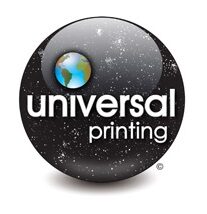Paper comes in all colors, weights, and finishes; and sometimes our customers know EXACTLY what paper they want. More likely, we’ll take in a project where the client won’t have a clue what they want, or even need.
Photoshop has come a long way since its original release back in 1991. Sure… I know some of you hardcore Adobe fans will argue and say it first came out in 1988. But let’s get real… Photoshop didn’t REALLY become impressive until it’s version 2.0 release.
Universal Printing has been in business for over 30 years, and when you’re doing something for so long it’s easy to forget that things we deal with day-in and day-out are completely foreign and mysterious to other people. This is the case with RGB and CMYK color spaces.
So far our previous blog posts have talked about Spot Colors, Process Colors, and how the difference between coated and uncoated paper impacts the color and appearance of the ink. Sometimes you might want to get a little more POP from your printed pieces. For some people, metallic ink has great appeal.
If you read our previous blog post, you should know the difference between Spot Colors and Process Colors and the role they play in commercial printing. Just to recap a few points:
COLOR PRINTING: For those who aren’t trained in printing or graphic design, it can all get very confusing. Most people who are taking the “Do It Yourself” approach to setting up files just look at colors on the computer screen, with maybe a handful that have access to a Pantone guide, but not really understanding it. If you’re not familiar with how ink works and how colors are made, you could end up with some very UNEXPECTED results. This is the first of a series of blog posts that will hopefully help make sense of color, and how color is made in the world of commercial printing.
20 years ago a very wise man named John Warnock came up with a GENUIS idea for a system that would allow files from any computer or application to be viewed or printed on any other computer regardless of whether the other machine had the original software application, fonts, graphics, or anything else. This system which he named Camelot, went on to become the Portable Document File Format released by Adobe in 1993. Since then PDFs have become not only the standard, but in many cases a REQUIREMENT for graphic design and commercial printing professional worldwide.
